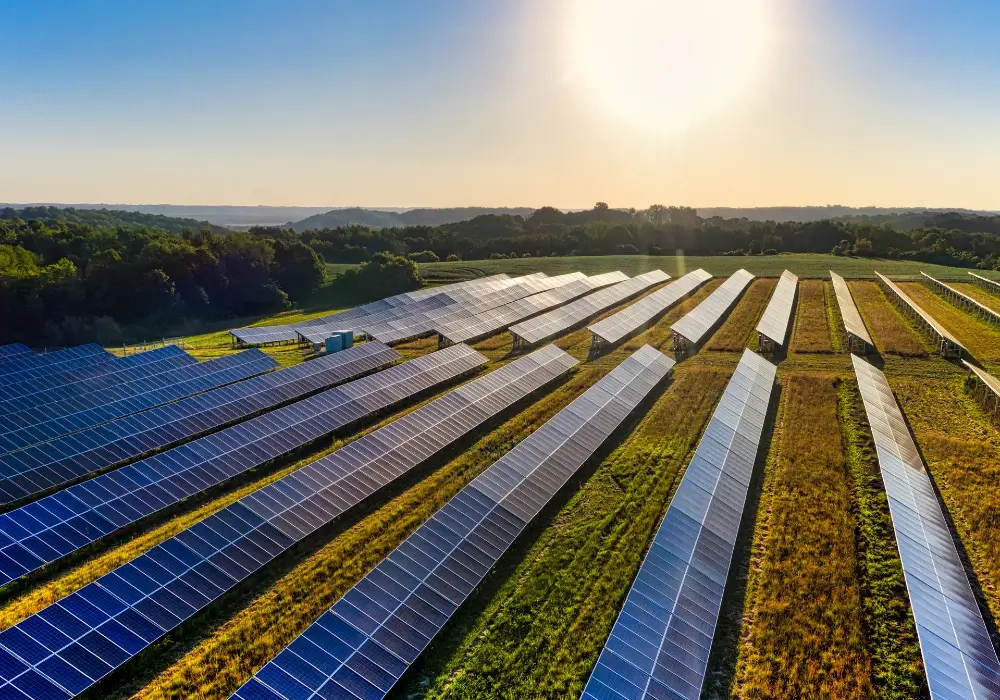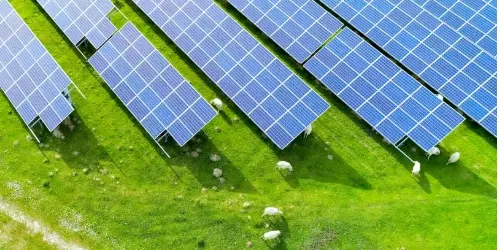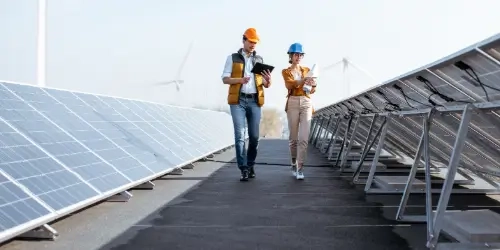The UK's renewable energy sector is growing rapidly, driven by ambitious Net-Zero targets for 2050. As the sector grows, so do the security threats that can seriously impact return on investment (ROI).
This shift has forced operators to reconsider their approach to security. The question is no longer whether to invest in protection, but how to calculate the ROI of comprehensive security measures against the potential losses of remaining unprotected.
The True Cost of Inadequate Solar Site Security
The cost of poor solar farm and development site security goes far beyond replacing valuable assets and critical infrastructure. Damage caused by vandals, trespassers and squatters can result in thousands of pounds in repairs, while replacing stolen equipment like copper cables, inverters and solar panels can amount to much more.
On top of this, solar farm operators face operational disruptions and long-term consequences that can impact their sustainability goals and ROI.
Here's a quick breakdown:
- Financial losses: A single copper cable theft incident can cost roughly £80,000 to replace 30 km of 4mm² cabling. Stolen inverters for large installations (10-50 kW) cost between £3,000 and £10,000 per unit to replace and a 50 kW solar PV system costs around £30,000 if panels are stolen or damaged. Additionally, perimeter fence repairs range between £110 and £150 per metre.
- Emergency repairs: Security breaches often result in reactive repairs. Emergency callouts, specialised equipment and urgent replacement parts can seriously impact your ROI as these unforeseen events typically don't fall within budgets.
- Revenue losses: Every day that a solar site is offline or a development is delayed results in financial loss. For context, a 1 MW solar farm generating 4,000 kWh of clean energy per day can lose £4,000 over 10 days of downtime (at a 10p/kWh rate).
- Regulatory risks: Solar farms operate under strict, long-term Power Purchase Agreements (PPAs) typically ranging from 10 to 25 years. Extended downtime and delays due to security breaches can result in penalties and fines, adding further financial pressure on solar site operators.
- Insurance complications: Many insurers require concrete evidence of security breaches. Without proper CCTV coverage, claims may be rejected, leaving operators to bear the cost of replacements/repairs out of pocket.
Without proper solar farm security, these costs can quickly add up, eliminating the financial benefits that make solar farms attractive investments.
Cost-Benefit Analysis of Solar Farm Security vs Unsecured Sites
Here is a side-by-side comparison of professional solar site security vs unsecured sites:
|
Aspect |
Professional Security |
Unsecured Sites |
|
Initial Investment |
Flexible rentals are available for cost efficiency |
£0 but comes with higher risks |
|
Annual Maintenance Costs |
Typically included in hired CCTV packages |
£0 |
|
Theft & Vandalism |
Low risk; reduces crime by roughly 85% |
High risk |
|
Direct Financial Losses |
Minimal replacement or repairs; may be covered by the manufacturer |
High costs from stolen PV panels, copper cables and inverters, amounting to thousands of pounds |
|
Operational Downtime |
Fewer disruptions due to rapid detection and response |
Prolonged outages and delays, costing hundreds of pounds every day when offline |
|
Insurance Premiums |
Lower premiums due to meeting compliance requirements ("low risk") |
Higher premiums (or denied coverage) as these sites are classed as "high risk" |
|
Operational Efficiency |
Maintains operations through remote monitoring, resulting in fewer false alarms and targeted maintenance via in-built CCTV diagnostics |
Inefficient due to frequent disruptions and reactive management |
|
Return On Investment |
Consistent system performance = faster ROI |
Interrupted output delays ROI |
As you can see, investing in professional-grade security solutions provides significantly greater operational, financial and strategic benefits than leaving a site unsecured.
Next, we’ll explore several security solutions available in the UK, followed by why solar farm security is so important and the long-term value it brings to your clean energy investment.
Solar Farm Security Solutions for Protecting Assets and Maximising ROI
Several security measures are available for UK solar farms and solar developers, each designed to safeguard high-value assets from security threats, prevent costly disruptions and protect your ROI:
Physical security measures
- Perimeter fencing: Secure fencing around site perimeters makes entry/exit more difficult, preventing unauthorised access from thieves, trespassers and squatters.
- Tamper-proof fixtures: Anti-tamper screws, reinforced locking clamps, keycard/PIN access points and strong padlocks all help prevent easy removal of solar equipment and unauthorised access.
- Security guards: The presence of security personnel can serve as a physical deterrent on solar sites, ensuring access roads and entry points are monitored and controlled.
CCTV surveillance
- CCTV cameras: High-resolution 4K PTZ (Pan-Tilt-Zoom) surveillance cameras deliver near-360° site coverage for day-to-night protection. Thermal cameras with advanced night vision and infrared (IR) capabilities can detect intruders at distances of up to 200 metres in darkness, dust and fog.
- Redeployable CCTV: Deliver live and recorded video footage without the need for fixed infrastructure, allowing operators to move them to exactly where they need them to be.
- PID integration: CCTV surveillance with advanced perimeter intruder detection systems (PIDS) like ANPR (automatic number plate recognition) and/or Time-Lapse Video features provide an additional layer of protection for your peace of mind.
- CCTV Towers: Standing up to 6 metres tall, these highly visible deterrents combine HD PTZ cameras with wireless transmission while providing near-360° coverage, making them ideal for remote locations.
- Temporary CCTV: Rapid deployment CCTV systems for temporary use across any environment. Available on a rental basis, these systems provide 24/7 site protection when you need it most.
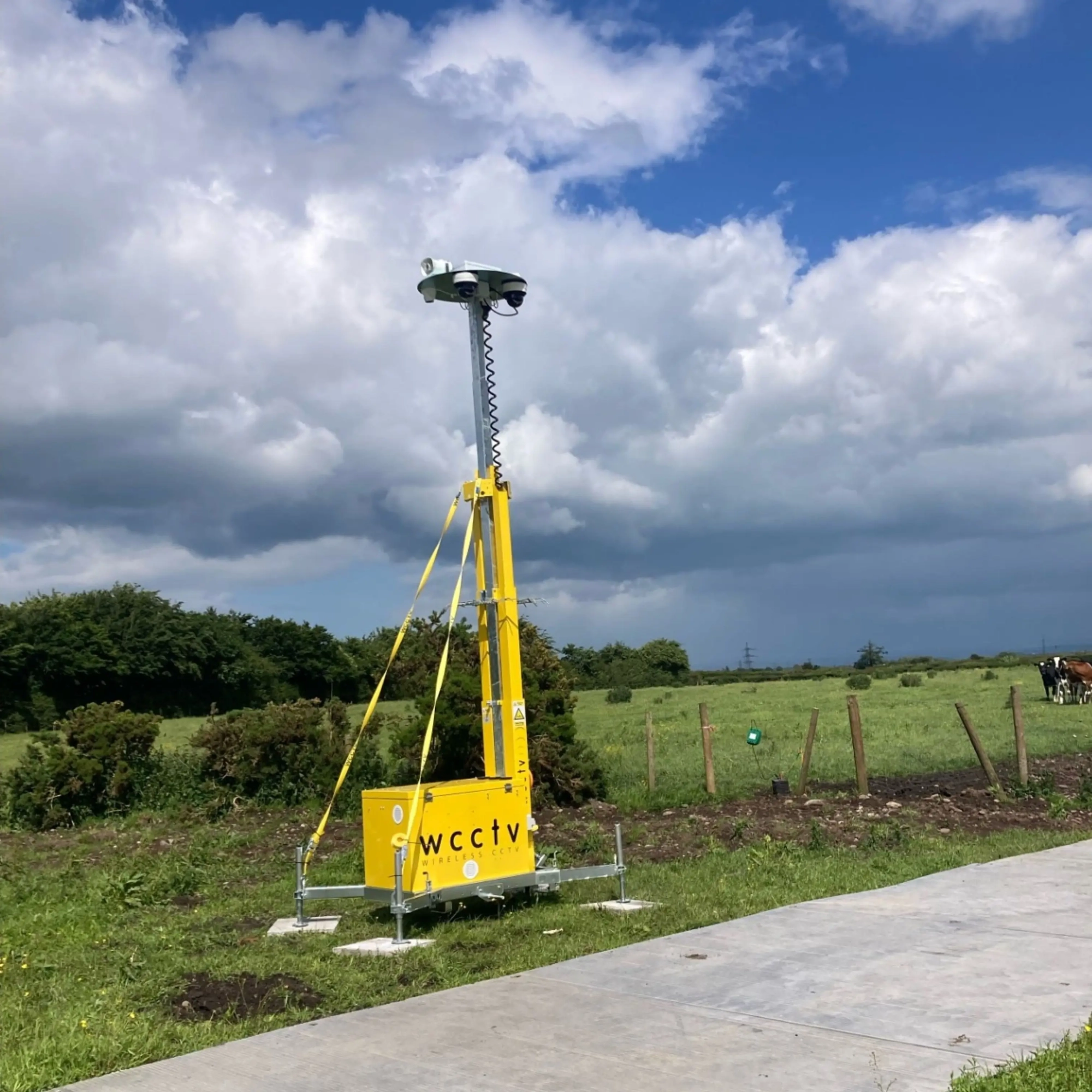
Remote monitoring services
- Remote monitoring: Trained security personnel at NSI Gold Accredited monitoring centres monitor your CCTV cameras in real-time. These professionals review motion-triggered activity and respond instantly to any potential threats, ensuring complete protection of your renewable energy investments.
- Mobile keyholding and alarm response: When a security breach is detected out of hours, a licensed professional attends your site, investigates the situation and secures your solar project without involving your team.
As you can see, fully-managed security measures are the ideal solution for protecting your assets and maximising ROI. Let's go into even more detail about their specific benefits.
The Key Benefits of Professional Solar Farm Security
Proper security at solar farms and development sites benefits your renewable energy operations in the following ways:
Operational advantages
- Theft prevention and asset protection: Advanced security systems can reduce theft, vandalism and trespassing by around 85% compared to unsecured sites. They deter intruders and protect valuable assets like solar panels, copper cables and battery storage units, preventing costly replacements and keeping operational downtime to a minimum.
- Reduced downtime: Proactive security measures like solar-powered CCTV Towers and cameras detect and deter criminal activity. By protecting sites 24/7, you have minimal disruptions and continuous power generation.
- Insurance compliance: Advanced security at solar farms and development sites can help keep insurance premiums down and streamline the claims process. CCTV cameras equipped with thermal imaging and live remote monitoring provide accurate incident documentation needed for claims.
Environmental advantages
- Low environmental impact: Solar farms, including those under construction, generally disrupt less than 2% of the entire area of the site. This minimal footprint enables continued land use for grazing, helping to preserve agricultural land and support biodiversity.
- Zero emissions: Both small and large-scale solar farms release zero greenhouse gases (GHGs) during operation. By securing these renewable energy sites, operators protect both their ROI and long-term climate goal commitment.
- Support sustainability goals: By protecting solar farms and development sites from theft, vandalism and operational disruptions, solar energy security systems help maintain consistent renewable energy production that supports the UK's Net-Zero goals.
Cost benefits
- Cost savings on theft: Efficient CCTV systems reduce losses from stolen/damaged solar power equipment, saving operators thousands of pounds on costly repairs and replacements.
- Lower security personnel costs: Professional-grade CCTV surveillance costs a fraction of onsite security personnel. Our systems can save operators up to 88% on their security costs.
- Reduce insurance premiums: As mentioned, many insurers might deny claims if sufficient surveillance and accurate incident documentation are not in order. By investing in proper solar site security (with 24/7 remote monitoring), you'll remain compliant and potentially experience lower premiums.
- Minimal maintenance: Preventing unauthorised access reduces the frequency and cost of repairs/replacements. Most solar panels come with a 20 to 25-year warranty, allowing sites to generate clean electricity for decades. Additionally, annual maintenance only costs around 1% of your initial solar investment (or costs are covered in rental packages).
- Return on investment: The average ROI for solar projects is around 10-20%, allowing operators to recoup their initial investment within 5-10 years.
Now that you know the benefits of solar site security, let's see how you can calculate your solar site security ROI.
Calculating Your Solar Site Security ROI
Solar ROI measures the financial gains from investing in a solar power system’s security over its lifespan. To determine your security investment’s ROI, use this formula:
- ROI = Net benefit from security investment ÷ Total security investment cost x 100%
Step 1: Calculate total security costs
- Add all upfront installation costs (equipment, installation, etc.).
- Add maintenance, monitoring and operational costs over the expected security system lifespan.
Step 2: Calculate losses without security
- Calculate average annual losses from theft, vandalism and downtime (including lost revenue, repair/replacement costs and insurance premium increases).
- Multiply this amount by the expected period (e.g., 10-25 years).
Step 3: Calculate losses with security
- Estimate losses assuming security reduces theft/vandalism by 85%.
- Calculate the difference between losses with and without security.
Step 4: Calculate net benefit
Net Benefit = Losses avoided over the expected period − Total security costs
Step 5: Calculate ROI
ROI = Net benefit from security investment ÷ Total security investment cost x 100%
Example
|
Item |
Value (£) |
|
Total security investment cost |
£100,000 |
|
Annual losses without security |
£60,000 |
|
Losses with security (85%) |
Losses reduced to £9,000 |
|
Annual losses avoided |
£51,000 (£60,000 - £9,000) |
|
Total losses avoided over 10 years |
£510,000 (£51,000 x 10) |
|
Net benefit over 10 years |
£510,000 - £100,000 = £410,000 |
|
ROI |
(£410,000 ÷ £100,000) x 100% = 410% |
In this example, investing £100,000 in solar security returns £410,000 in avoided losses over 10 years, which translates to a £4.10 return for every £1 spent.
Government-backed initiatives for solar installations in the UK
- Public Sector Decarbonisation Scheme (PSDS): Provides funding to public sector bodies for heat decarbonisation and energy efficiency measures, including solar panel installations.
- Department for Environment, Food & Rural Affairs (Defra): Participating solar farmers/land owners may be eligible to receive up to 25% of their solar installation costs with a maximum grant of £100,000.
- The Annual Investment Allowance (AIA): Allows businesses investing in equipment and machinery (including solar panels) to claim 100% tax relief of up to £1 million per year.
- Smart Export Guarantee (SEG): Applicable to Great Britain, the SEG scheme pays small-scale clean energy generators (up to 5 MW capacity) for surplus electricity exported to the National Grid.
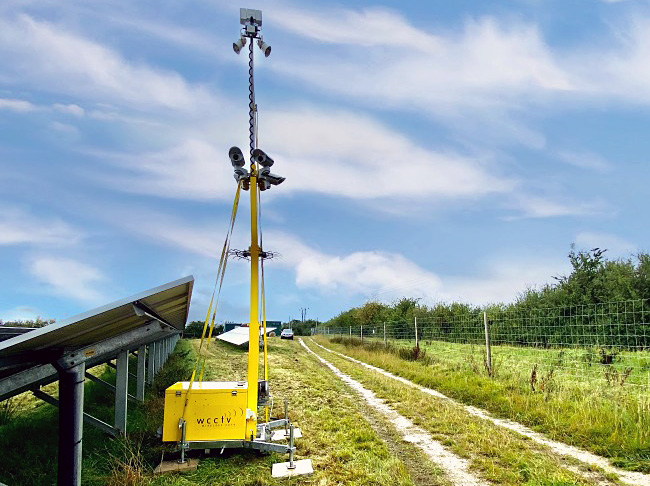
Cut Costs on Your Solar Security with WCCTV Today
When you factor in the cost of theft, downtime and insurance complications, it’s clear that solar security pays for itself many times over.
Our fully-managed systems protect solar sites at a fraction of the cost of on-site guards. With over 20-years of experience in wireless surveillance, we're your trusted provider in protecting what matters most: your high-value assets and long-term ROI.
Contact our team to discuss your needs today.
